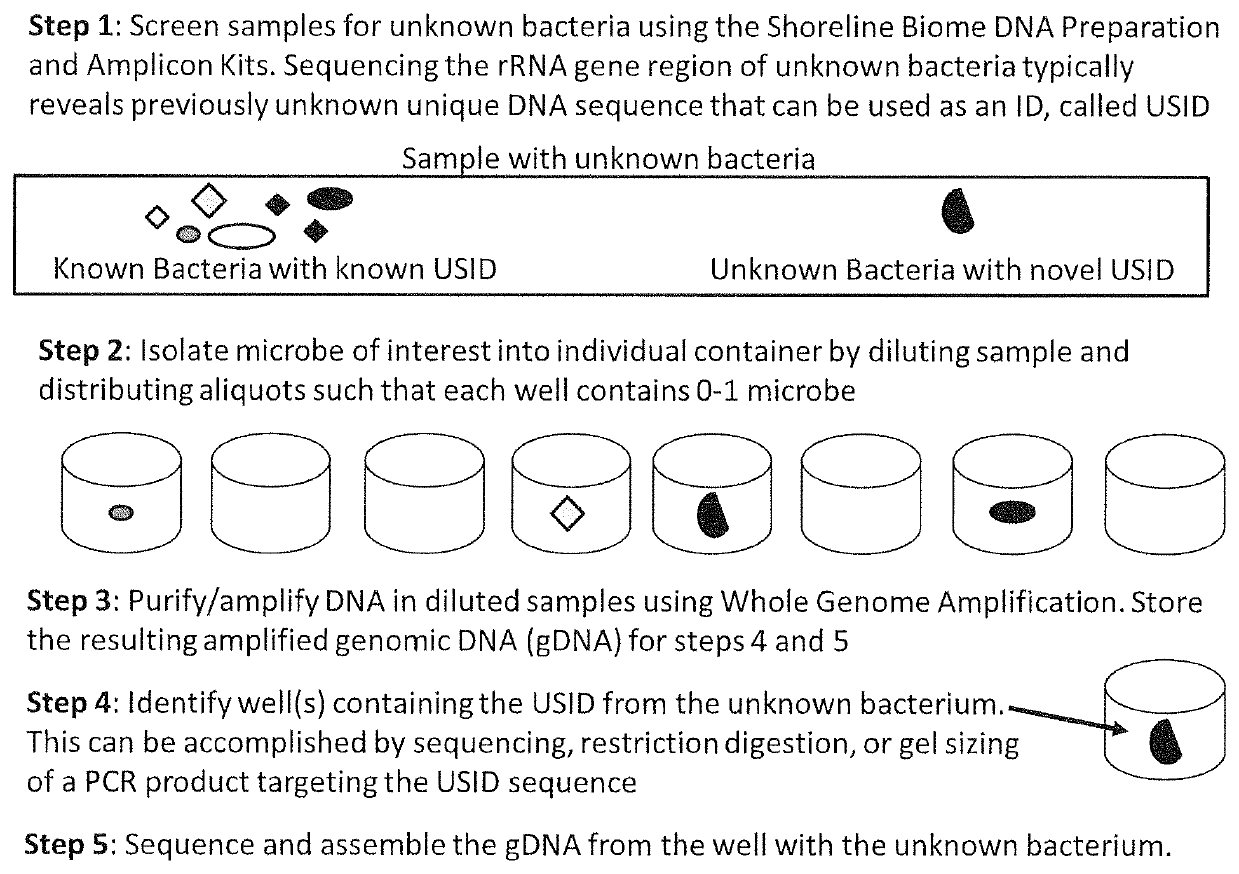High throughput method for identification and sequencing of unknown microbial and eukaryotic genomes from complex mixtures
a complex mixture and genome technology, applied in the field of biological samples screening, can solve the problems of inability to culture most bacteria and archaea by any known means, waste of sequence data, and inability to identify, isolate and sequence unknown microorganisms from biological samples, etc., to achieve the effect of avoiding the loss of sequence data
- Summary
- Abstract
- Description
- Claims
- Application Information
AI Technical Summary
Benefits of technology
Problems solved by technology
Method used
Image
Examples
example
[0035]FIG. 1 depicts an example of an embodiment of the present invention used to identify, isolate, and sequence an unknown microbe in a biological sample without having to culture the organism (Steps 1-5, described below). In Step 1, a number (for example 96) biological samples are screened for novel microbes using DNA sequencing methods. The screening process in this embodiment includes lysis of cells and purification of cellular genomic DNA (gDNA) from the sample, amplification of the rRNA gene target region(s) while adding DNA barcodes to each sample so that the 96 samples can be pooled for simultaneous sequencing. The process as described in this example can be carried out using, for example, Shoreline Biome DNA Preparation and Amplicon Kits. The amplified barcoded rRNA sequences in each sample can be screened for the presence of unknown sequences that are contained in unknown microbes.
[0036]Step 1.
[0037]The rRNA sequence data will reveal the presence of unknown microbes in th...
PUM
| Property | Measurement | Unit |
|---|---|---|
| acid | aaaaa | aaaaa |
| deoxyribonucleic acid | aaaaa | aaaaa |
| fluorescence polarization | aaaaa | aaaaa |
Abstract
Description
Claims
Application Information
 Login to View More
Login to View More - R&D
- Intellectual Property
- Life Sciences
- Materials
- Tech Scout
- Unparalleled Data Quality
- Higher Quality Content
- 60% Fewer Hallucinations
Browse by: Latest US Patents, China's latest patents, Technical Efficacy Thesaurus, Application Domain, Technology Topic, Popular Technical Reports.
© 2025 PatSnap. All rights reserved.Legal|Privacy policy|Modern Slavery Act Transparency Statement|Sitemap|About US| Contact US: help@patsnap.com

